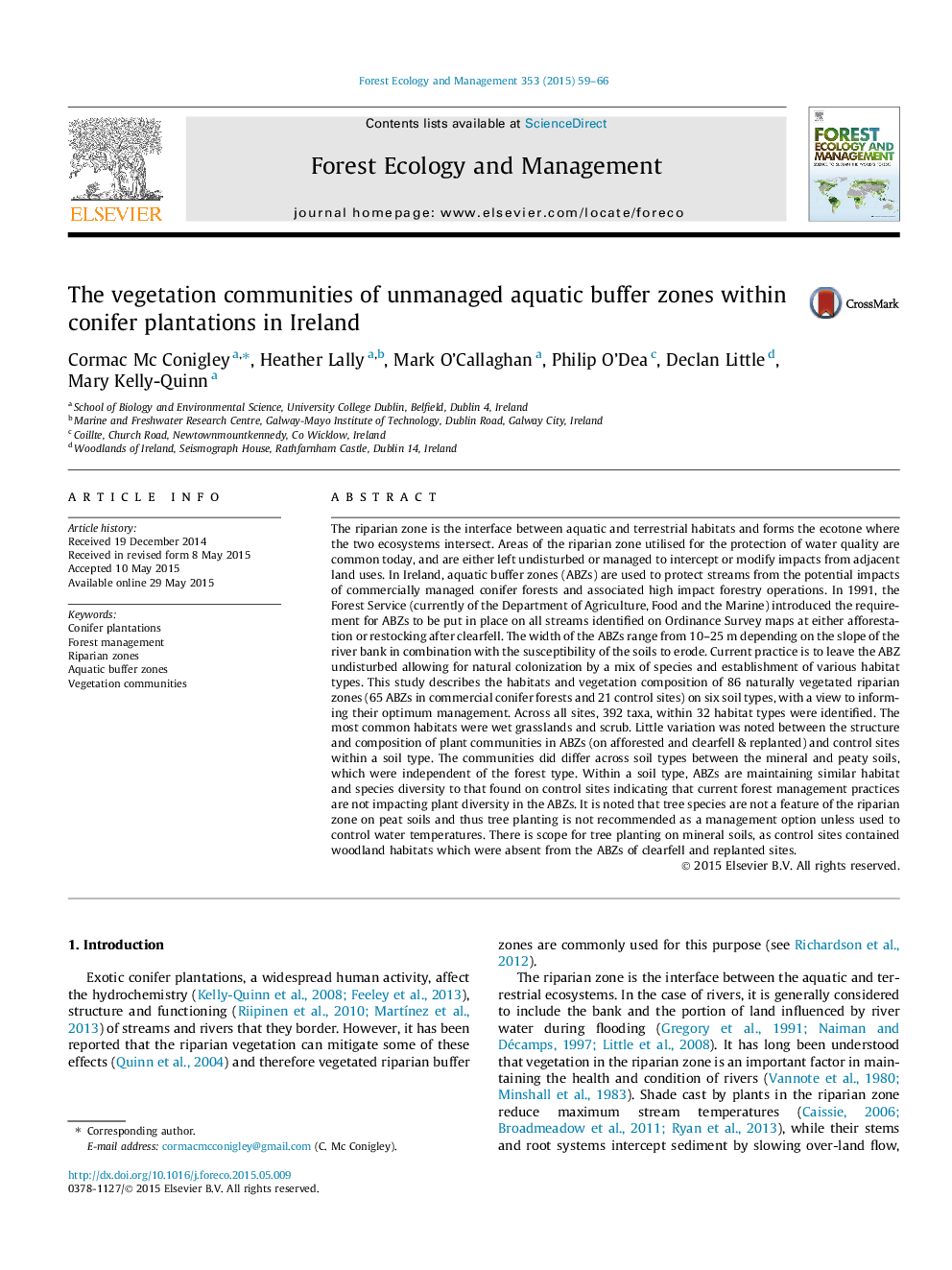| کد مقاله | کد نشریه | سال انتشار | مقاله انگلیسی | نسخه تمام متن |
|---|---|---|---|---|
| 86218 | 159172 | 2015 | 8 صفحه PDF | دانلود رایگان |
• Aquatic buffer zones are most often dominated by wet grasslands and scrub habitats.
• Aquatic buffer zones are maintaining the habitat and species diversity found in control sites.
• Soil influences the plant community more so than adjacent forest.
The riparian zone is the interface between aquatic and terrestrial habitats and forms the ecotone where the two ecosystems intersect. Areas of the riparian zone utilised for the protection of water quality are common today, and are either left undisturbed or managed to intercept or modify impacts from adjacent land uses. In Ireland, aquatic buffer zones (ABZs) are used to protect streams from the potential impacts of commercially managed conifer forests and associated high impact forestry operations. In 1991, the Forest Service (currently of the Department of Agriculture, Food and the Marine) introduced the requirement for ABZs to be put in place on all streams identified on Ordinance Survey maps at either afforestation or restocking after clearfell. The width of the ABZs range from 10–25 m depending on the slope of the river bank in combination with the susceptibility of the soils to erode. Current practice is to leave the ABZ undisturbed allowing for natural colonization by a mix of species and establishment of various habitat types. This study describes the habitats and vegetation composition of 86 naturally vegetated riparian zones (65 ABZs in commercial conifer forests and 21 control sites) on six soil types, with a view to informing their optimum management. Across all sites, 392 taxa, within 32 habitat types were identified. The most common habitats were wet grasslands and scrub. Little variation was noted between the structure and composition of plant communities in ABZs (on afforested and clearfell & replanted) and control sites within a soil type. The communities did differ across soil types between the mineral and peaty soils, which were independent of the forest type. Within a soil type, ABZs are maintaining similar habitat and species diversity to that found on control sites indicating that current forest management practices are not impacting plant diversity in the ABZs. It is noted that tree species are not a feature of the riparian zone on peat soils and thus tree planting is not recommended as a management option unless used to control water temperatures. There is scope for tree planting on mineral soils, as control sites contained woodland habitats which were absent from the ABZs of clearfell and replanted sites.
Journal: Forest Ecology and Management - Volume 353, 1 October 2015, Pages 59–66
